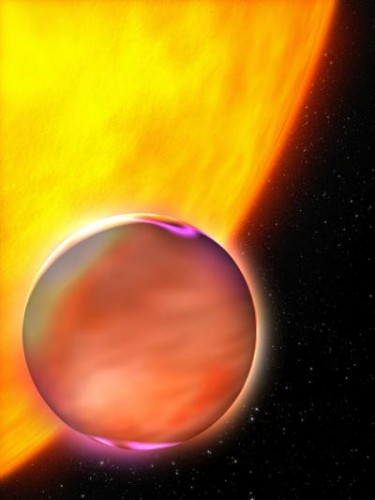Researchers at UCL and the University of New South Wales in Australia have developed a new spectral index for 'hot' methane, in which it will be possible to detect the molecule at temperatures hotter than those of the Earth - up to 1200 degrees Celsius, which was not possible until now

Researchers at University College London have developed a new model for discovering life on planets outside the solar system that claims to be more accurate than its predecessors. The new model focuses on methane, the simplest organic molecule, which is also known to hint at the potential for life.
The researchers at UCL and the University of New South Wales in Australia have developed a new spectrum index for 'hot' methane, in which it will be possible to detect the molecule at temperatures hotter than those of the Earth - up to 1200 degrees Celsius, which was not possible until now.
To find out what planets orbiting other suns are made of, astronomers analyze the starlight when the planet passes in front of them and compare it to a model or predicted spectrum for that star, to identify different molecules.
Prof. Jonathan Tennyson from the Department of Physics and Astronomy at University College London, and a partner in the study says: "The existing models for detecting methane are incomplete, and this leads to an underestimation of methane levels in the planets. We expect that the new model will greatly influence future studies of planets and 'cold' stars outside the solar system, and may also allow scientists to detect signs of extraterrestrial life."
The study, published in the journal PNAS, describes how the researchers used the UK's most powerful supercomputers (the DiRAC Distributed Computing Project and the University of Cambridge) to calculate about 10 billion spectral lines of stars, where the methane forms an absorption band. The new list of lines is two thousand times larger than any previous study, and this means an increase in accuracy over the entire temperature range that was previously impossible.
The lead researcher in the study, Dr. Sergey Yurchenko (also from the Department of Physics and Astronomy at UCL) added: The comprehensive spectrum we created was only possible thanks to the ability of the modern supercomputers that could process the billions of lines required for the model. We limited the temperature to 1,500 Kelvin to match the computing capacity, and therefore the model can be extended to higher temperatures, if required. Our calculations required 3 million CPU hours. The processing power was made possible through the DiRAC project.”
"We are happy that we had the opportunity to use the technology to advance the model far beyond small models with the goal that it will serve as a research tool for locating potential life on astronomical objects, and we are already waiting for the first discovery," he added.
The model was able to detect methane, albeit of natural origin, found in failed stars, also known as brown dwarfs.
For information on the University College London website

9 תגובות
Wait - the natural gas is also in the air. The question is if it is possible to develop a pump that will filter it from the air. And thus become a fuel-gas producer. The pump could be powered by solar energy.
Kobi
There is no connection between what you said and my response.
Even in 2000 years when they were "aliens". Judaism will remain, because the holy book preserves the culture.
Epigenetics is also passed on to future generations.
If the population separates for many generations, it is clear that there were genetic changes, survival and acclimatization to the new area, such as lack of weight, air pressure, radiation, a different environment of germs and viruses, different food, etc.
In the midst of thousands of generations they will become aliens to the nation of the population in Israel.
Anonymous (unidentified) user
What you say is not exactly true. The genetics, in some ways will really manifest in a different way, but the effect is not great.
And in any case - and this is important to understand - these changes will not be passed on to the next generation!
If identical twins were separated and one grew up on the equator, and the other on the Arctic Circle, their genetics would be expressed differently. If the person settled on Mars, the isolation and the environment would give a different appearance to the person. And over the generations, the person from the land would be seen as an alien.
42
WOW
3 million CPU hours
340 years on a regular computer
How long will the supercomputer be able to give a result?